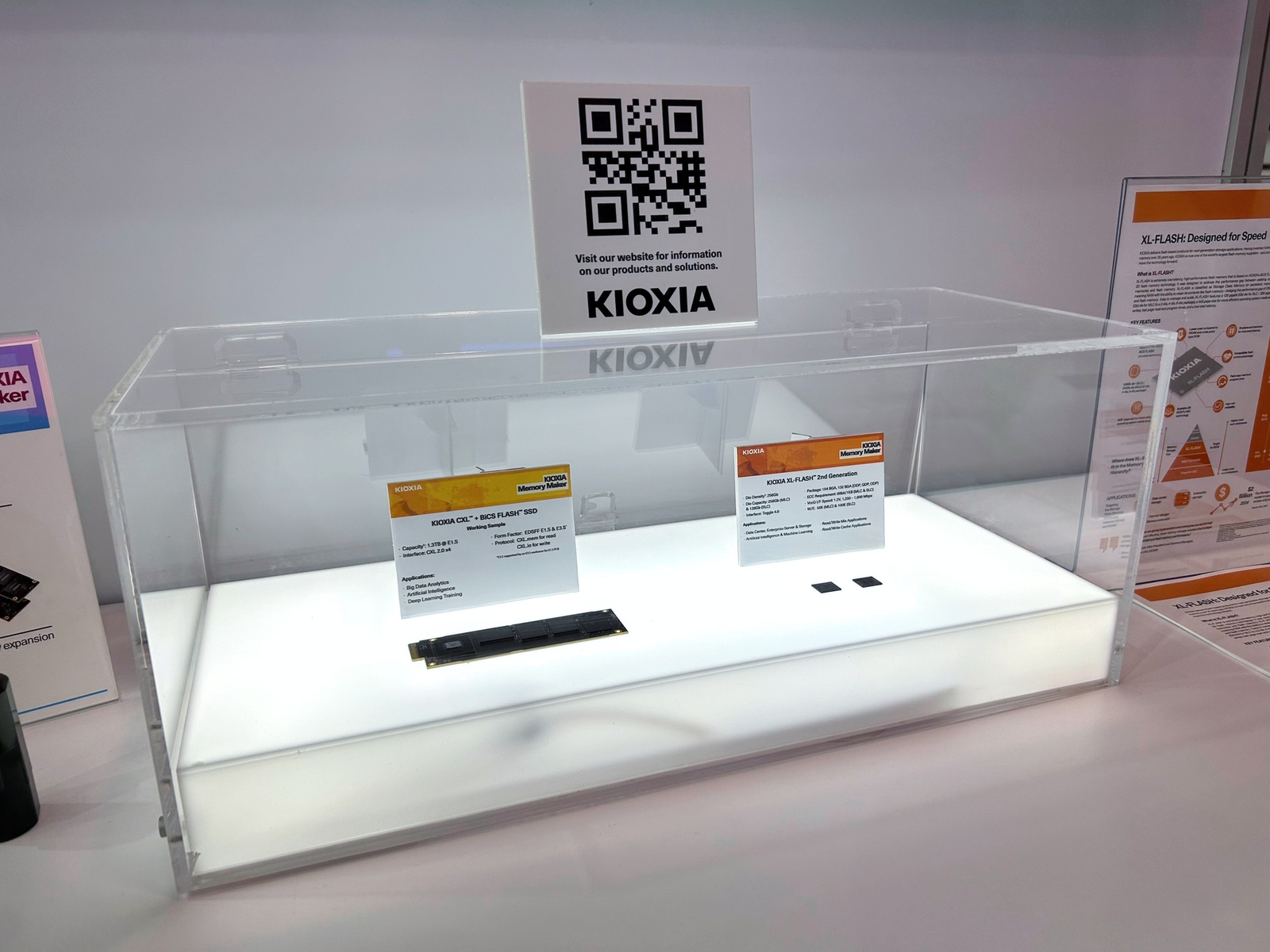
The Compute Express Link technology allows for building various devices to address a vast array of workloads, from expanding memory subsystem capacity and performance to offering ultra-fast persistent storage. Being one of the world's leading makers of NAND memory, Kioxia can address the latter. Recently, it demonstrated its 3D NAND and XL-Flash-based CXL solutions at the Flash Memory Summit 2023, as reported by ServeTheHome.
Kioxia revealed plans to offer two lineups of its CXL products: CXL + XL-Flash-based devices for performance and reliability-centric applications such as in-memory databases and AI inference workloads, as well as CXL + BiCS 3D NAND-powered devices for capacity-hungry applications like Big Data and AI training. In both cases, storage devices use a special controller and CXL.mem protocol for reading and CXL.io protocol for writing to minimize respective latencies.
Regarding demonstrations, Kioxia showed a sample of a 1.3 TB CXL 1.1/CXL 2.0 BiCS 3D NAND-based device in an E1.S form-factor that can be installed into an E3.S chassis for higher performance/thermal capacity. The device uses a PCIe x4 interface (PCIe Gen5, we presume), though Kioxia does not disclose its performance characteristics, perhaps because the development has not finished.
While usage of a low-latency 3D (TLC) NAND-powered device over a PCIe interface with the CXL protocol on top seems like a very plausible idea, usage of an XL-Flash-based storage device promises to be even more fruitful due to the higher performance of XL-Flash compared to commodity 3D NAND.
Kioxia's proprietary 1st Generation XL-Flash is essentially single-level cell (SLC) NAND spread over 16 planes, whereas 2nd Generation XL-Flash is multi-level cell (MLC) flash memory spread over a higher number of planes, which by definition offers lower latency and higher parallelism for read/write operations, thus guaranteeing massively higher performance compares to mainstream 3D TLC NAND.
Last year Kioxia said that its CXL storage devices would use its 2nd Generation XL-Flash, which promises to outperform the 1st Generation XL-Flash while being more cost-effective and thus enabling higher capacities.
For now, Kioxia remains tight-lipped when it plans to ship its CXL devices featuring commodity 3D NAND and proprietary storage-class XL-Flash memory. Still, based on the fact that it is displaying some of the former products and does not showcase the latter (at least openly), we can assume that 3D NAND-based devices will be available a bit earlier.







